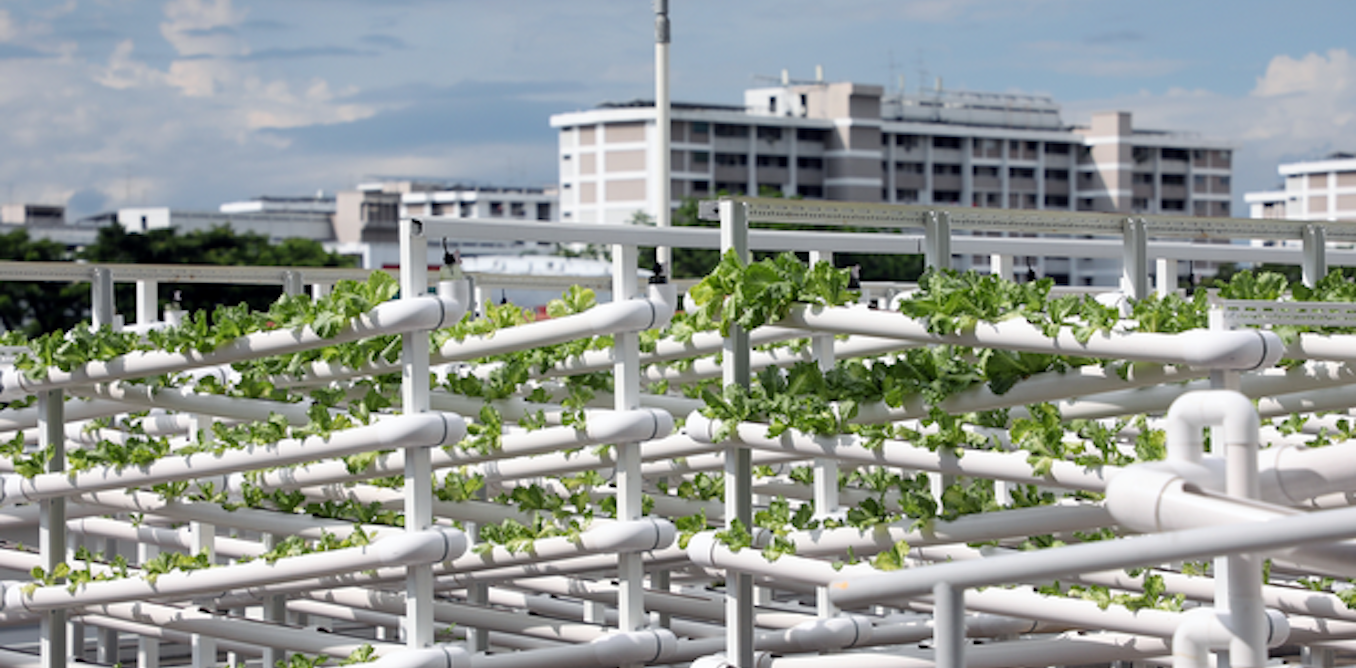Degrowth, or the idea that we can save the planet by shrinking our economies, is ceasing to be a fringe concept. In the past years, green politicians across the EU have increasingly claimed the school of thought offers the best solution to the ecological crisis.
In some quarters, science is also lending its credentials: the United Nations’ scientific panels tasked with measuring climate breakdown and biodiversity loss, the IPCC and IPBES, have respectively suggested governments consider degrowth policies to fight ecological breakdown, while academics are now incorporating degrowth scenarios in scientific models.
Imagining technology in a degrowth world
What these concepts would look like in real life, however, is still a work in progress. As a scholar researching technology use in alternative markets, I have been particularly interested in exploring degrowth’s relationship to technology.
Contrary to common perceptions, degrowthers are not against technology. In fact, some of the school’s leading thinkers such as Jason Hickel have made a point of rejecting the label of “anti-technology”, stressing that the movement prioritises changes and efficiency improvements to the extent that they are “empirically feasible, ecologically coherent, and socially just”. Again, what technologies may qualify according to this criteria remains to be seen. In my research, I argue that vertical farming, the practice of growing crops in stacked pots within tower-like structures on rooftops or vacant spaces, provides us with a textbook example of degrowth-friendly technology.
A glance at the academic literature on degrowth appears to support this. In an article reviewing sustainable agri-food systems, degrowthers celebrate “edible urban commons” and the principles of sufficiency and regeneration. In contrast to indoor vertical farms built by tech giants, urban rooftop farms aren’t energy intensive. By enabling individuals and small businesses to grow food outdoors in urban areas, they reduce both city dwellers’ need to grow food in the countryside and their dependency on an increasingly fickle global food-supply chain.
Paris’ urban farms
At heart a farmer’s nation, France offers some of the world’s most compelling examples of vertical farming. Located on the rooftop of Paris Expo’s Pavillon 6, Nature Urbaine is the largest urban farm in Europe with 14,000 m2 of space converted into a vertical farm. By using up every centimetre, carefully thought-out technologies allow residents to multiply the surface’s production capacity sixfold. Hundreds of towers hold fruits and vegetables suspended in the air and their roots are misted periodically with a nutrient solution. Rain gutters are also used, showering the roots with a mixture of water and nutrients.
While raising awareness over where our food comes from, these technologies bring locals closer to one another and enable them to exchange know-how on growing their own food. Nature Urbaine organises educational workshops for individuals, communities, and local businesses on urban food growing and environmental stewardship.
Future self-sustaining eco-communities
Initiated in 2016, the Dutch project ReGenVillages aspires to create eco-villages around the world that are self-sufficient in energy and food.
To make them as affordable as possible, planners intend to offer prefabricated housing. RegenVillages’ patented machine-learning software, VillageOS, aims to help residents better manage resources by providing them with data on their communities’ energy use, waste, water, and food-growing practices. This data is then sent to the cloud through which communities in similar or different climate zones can learn from each other’s management and regenerative practices.
Currently at the conceptual stage, the project Farmhouse by Austrian architecture firm Precht also aims to reconnect architecture and agriculture through prefabricated structures. At first glance, its model building resembles a carefully balanced jenga game, with triangular flats alternating with cells clad with greenery. The life cycle of residents, buildings and crops support one another: emanating heat allows plants like potatoes, nuts or beans to grow. A water treatment system filters rain and greywater, enriches it with nutrients and cycles it back to the greenhouses. The food waste can be locally collected in the buildings basement, turned into compost and reused to grow more food.
Vertical farming technologies present in Farmhouse, Nature Urbaine or ReGenvillages give nature and soil, which we have been degrading through intensive industrial agriculture, a chance to rejuvenate. Indeed, if grown via urban farming, the environmental impact of carbon-intensive plants can be reduced.
On top of freeing up space, these technologies help reduce our dependence on resources such as water, energy, soil, and chemicals that are necessary for intensive agricultural production. They also increase the quality of the air we breathe, creating green havens for better thermal regulation in cities threatened with turning into ovens over the summer.
The limits of urban farming
Nonetheless, urban agriculture’s carbon footprint is a lasting concern. A serving of fruits and vegetables grown from urban agriculture emits the equivalent of 420g of carbon dioxide, six times more carbon emissions than conventional agriculture (70g CO2 equivalent). Conversely, urban agriculture outruns conventional agriculture when it comes to producing crops such as tomatoes that are less carbon intensive, and also urban farms and individually managed gardens. What remains critical is the use of less energy-intensive technologies and more climate-friendly crops in urban farms.
Whether we can scale these technologies to feed urban residents all over the world remains to be seen, due to small quantity and limited range food supply. However, the Covid-19 pandemic has shown the importance of local food sufficiency, as global food supply chains failed to cater to the needs of urban people.
Another point of contention is whether these technologies can be inclusive enough to help people from disadvantaged backgrounds to grow their own food. We can draw hope from a number of vertical farming projects by NGOs, with some coaching prison inmates and guards to grow and share their own food. These are encouraging local solidarity initiatives toward an equitable food system.
Finally, let’s not forget the issue of city-dwellers’ time constraints and lack of agricultural skills. Encouraging urban people to grow food will require substantial societal transformations to blend work and personal life. For example, shared corporate gardens and degrowth labour policy proposals such as the four-day working week could enable more people to invest time in learning to grow their own food with their communities.



